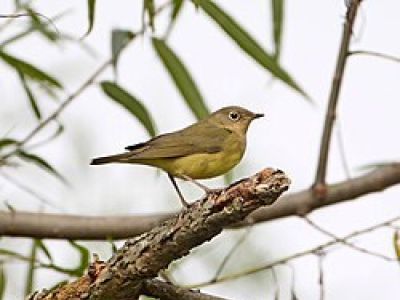B-COWA-Connecticut Warbler

Connecticut Warbler
Oporornis agilis
- Phylum: Craniata
- Class: Aves
- Order: Passeriformes
- Family: Parulidae
The Connecticut warbler (Oporornis agilis) is a small songbird of the New World warbler family. These medium-sized warblers measure 13–15 cm (5.1–5.9 in) in length.
General Information
Key Habitat Features
Mature and old deciduous forest (especially aspen and trembling aspen) with richly vegetated understory.
Vegetated understory consists of: tall bluebell, white geranium, baneberry, rose, northern bedstraw, red-osier dogwood, willow, bluegrass, wildrye, timothy, paintbrush, junegrass, bunchberry, soopolallie, fireweed, American vetch, purple peavine, and spruce interspersed through the stand.
Nesting and foraging occurs on or very near the ground.
Intact forested areas >5ha, and tree canopy with lush understory and complex structural character.
Objectives
Minimize disturbance during the breeding season.
Maintain nesting habitat throughout all seasons.
Maintain desired plant communities and key habitat features.
Planning and Operational Measures
All Activities
Identify key habitat features using appropriate measures (i.e. QP direction, desktop review, field confirmation, etc) and plan activities within the operating area accordingly.
Within identified habitat, ensure that proposed activities maintain the occurrence of unfragmented mature forest patches >5ha.
Time works such that they occur outside of the critical timing window.
All Activities
Undertake construction and operation of oil and gas activities in a manner that minimizes impacts to desired plant communities and key habitat features.
Timing considerations when working within identified habitat:
Avoid disturbance and/or clearing activities during the critical timing window from June 1 to July 31.
Where an application area is within a NEBC WHA for Connecticut Warbler, please refer to the EIMS summary for that Order. Proponents are required to adhere to the guidance provided in that summary, including any relevant timing considerations.